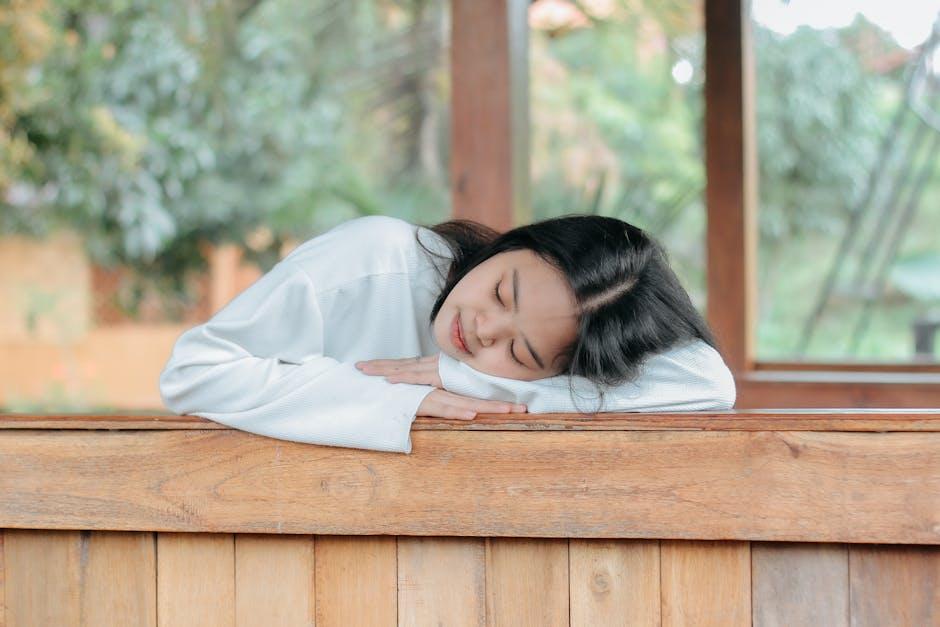In a world that never seems to slow down, the elusive embrace of restful sleep often feels like a distant dream. While the temptation to reach for a quick fix in the form of medication is strong, there’s a growing desire to discover natural ways to reclaim peaceful nights. This article explores practical, science-backed strategies to enhance your sleep quality without relying on pills-inviting you to unlock the secrets of deep, restorative rest through simple changes and mindful habits. Whether you’re battling occasional insomnia or just seeking to upgrade your nightly routine, these tips offer a gentle path to better sleep, naturally.
Understanding Your Sleep Patterns for Personalized Rest

Unlocking the secrets of your nightly rest begins with recognizing that no two sleep journeys are alike. Your body’s internal clock, or circadian rhythm, dictates when you feel alert and when you crave sleep. By tracking your natural tendencies-such as the times you feel most awake or when you experience the deepest slumber-you can tailor your rest strategies to fit your unique biological rhythm. Use simple tools like sleep journals or smartphone apps to monitor patterns including sleep onset, duration, and awakenings. Such insights empower you to create personalized routines that maximize restorative hours without relying on medication.
Consider these key aspects when observing your sleep behaviors:
- Consistency: Note how varying sleep times impact your energy.
- Sleep quality: Identify factors that contribute to tossing and turning.
- Environmental influences: Track how light, noise, and temperature affect your rest.
- Pre-sleep activities: Observe which habits ease you into sleep versus those that disrupt it.
| Sleep Factor | Impact on Rest | Recommended Action |
|---|---|---|
| Bedtime Consistency | Improves circadian rhythm alignment | Set a fixed bedtime within 30 minutes |
| Screen Exposure | Delays melatonin production | Avoid devices 1 hour before sleep |
| Room Temperature | Influences deep sleep quality | Keep bedroom cool (60-67°F) |
Creating a Sleep-Friendly Environment to Promote Relaxation

Transforming your bedroom into a sanctuary tailored for rest can profoundly impact the quality of your sleep. Start by focusing on lighting: dimming lights an hour before bedtime and using blackout curtains can help regulate your body’s natural sleep-wake cycle. Additionally, consider the temperature in your room; the ideal range is typically between 60-67°F (15-19°C), which encourages your body to cool down-a natural cue for sleep. Incorporate calming scents such as lavender or chamomile through essential oils or candles, but ensure they are extinguished before sleeping for safety.
Sound control plays a vital role as well. Soft background noises, like white noise machines or gentle nature sounds, can mask disruptive sounds, aiding uninterrupted sleep. To help you establish the perfect sleep atmosphere, here’s a quick guide:
| Element | Optimal Condition | Suggested Action |
|---|---|---|
| Lighting | Soft, warm, minimal | Use blackout curtains & dimmers |
| Temperature | 60-67°F (15-19°C) | Adjust thermostat & use breathable bedding |
| Sound | Quiet or white noise | Use earplugs or noise machines |
| Scent | Subtle, relaxing aromas | Use essential oils or scented sachets |
- Keep electronics to a minimum: Blue light from screens disrupts melatonin production.
- Choose comfortable bedding: Invest in pillows and mattresses tailored to your sleeping style.
- Declutter your space: A tidy room promotes a calm mind and reduces stress.
Incorporating Mindful Practices to Ease the Mind Before Bed

Introducing mindfulness into your nightly routine can significantly calm the restless chatter of the mind, paving the way for a serene transition into sleep. Engage in gentle breathing exercises, focusing on deep, even inhales and slow exhales. This conscious regulation of breath not only relaxes the nervous system but also interrupts negative thought loops that often surface when trying to fall asleep. Another effective strategy is to practice progressive muscle relaxation, where you systematically tense and release different muscle groups, helping to dissolve physical tension accumulated throughout the day.
Creating a personalized ritual with mindful activities transforms bedtime into a sanctuary of peace. Consider incorporating techniques such as:
- Visualization: Picture a peaceful place where you feel safe and relaxed, immersing all your senses in this calming scene.
- Gratitude journaling: Jot down three positive moments from your day to shift focus from worries to appreciation.
- Mindful stretching: Perform gentle stretches that release built-up stress, signaling your body to unwind.
Below is a simple table summarizing key mindful practices and their sleep benefits:
| Mindful Practice | Benefit |
|---|---|
| Deep Breathing | Reduces anxiety and slows heart rate |
| Progressive Muscle Relaxation | Releases physical tension |
| Visualization | Calms the mind through imagery |
Nutritional and Lifestyle Adjustments That Support Natural Sleep

Adjusting your daily habits can have a profound impact on your ability to fall asleep naturally. Start by incorporating nutrient-rich foods that promote relaxation and restful sleep. Foods high in magnesium, such as spinach, almonds, and pumpkin seeds, help calm the nervous system, while those rich in tryptophan-like turkey, eggs, and yogurt-support the production of serotonin and melatonin, essential sleep hormones. Additionally, maintaining balanced blood sugar levels through regular, light meals can prevent nighttime wakefulness. Avoiding caffeine and heavy, spicy meals in the late afternoon and evening also sets the stage for smoother sleep cycles.
Besides what you eat, small lifestyle shifts can enhance your sleep quality significantly. Establishing a consistent sleep schedule, even on weekends, trains your body’s internal clock for better rest. Incorporating relaxing pre-bed rituals such as gentle stretching, meditation, or reading can signal your brain to wind down. Don’t overlook the importance of natural light exposure during daylight hours to regulate circadian rhythms. Below is a simple table outlining some effective daytime activities and their impact on sleep quality:
| Activity | Benefit | Ideal Timing |
|---|---|---|
| Morning Sunlight Exposure | Resets internal clock | Within 1 hour of waking |
| Regular Physical Activity | Improves sleep depth | Morning or early afternoon |
| Mindfulness Meditation | Reduces stress | 30 minutes before bed |
Wrapping Up
As the night draws near and your mind begins to wander, remember that the path to restful sleep doesn’t have to be paved with pills. By embracing natural rhythms, cultivating calming rituals, and tuning into your body’s own signals, you can unlock the door to peaceful slumber-no medication required. Sleep, after all, is not just a biological need but a gentle art, one that invites patience, mindfulness, and a touch of creativity. So tonight, as you lay your head down, trust that better sleep is within reach, waiting quietly in the simple habits you choose to nurture. Sweet dreams.











